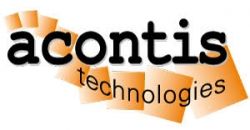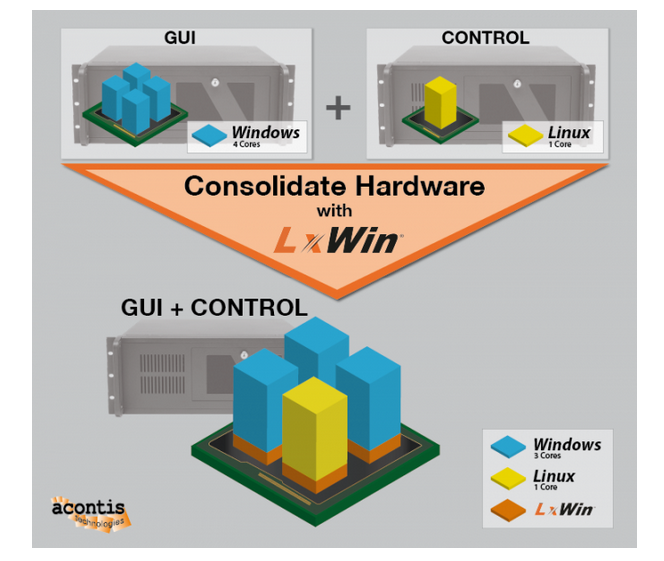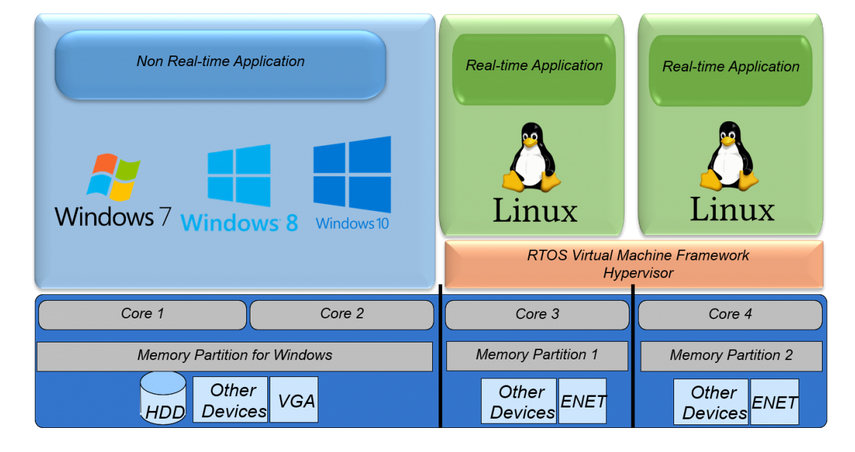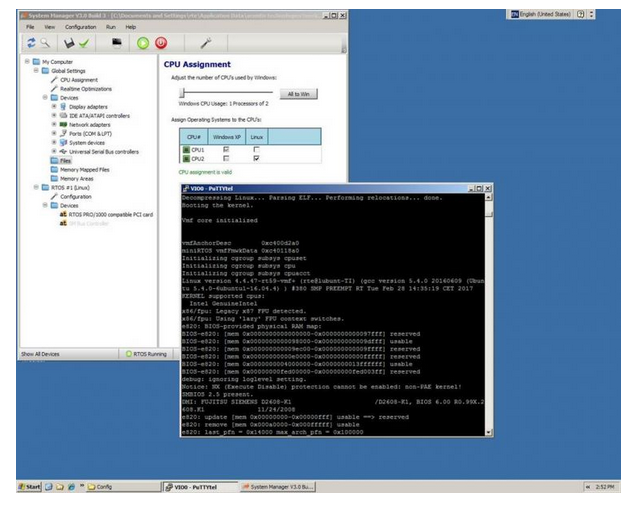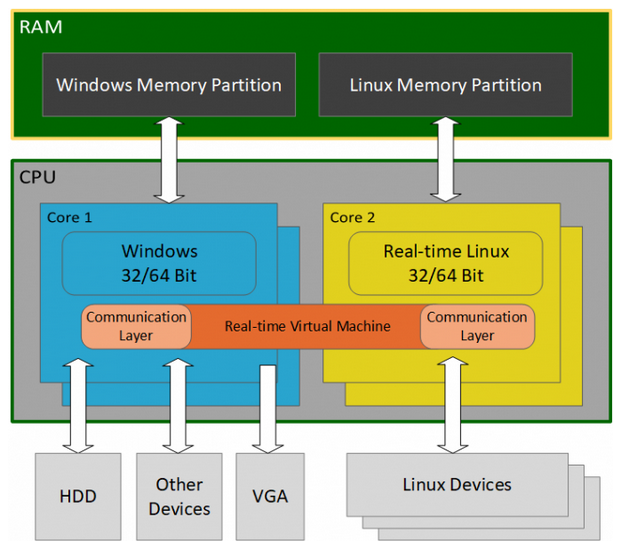Utilizziamo i cookie per rendere migliore la tua esperienza di navigazione. Per rispettare la nuova direttiva sulla privacy, è necessario chiedere il tuo consenso per impostare i cookie. Per saperne di più.
LxWin: Real-time Hypervisor: Windows + Real-time Linux
Today, Linux has become the most popular real-time operating system. Due to its deterministic hard real-time behavior, sophisticated development tools and broad hardware driver and software support, it is used by leading manufacturers of industrial con-trollers. Typical applications are PLC, Motion Control and Numeric Control systems with high real-time requirements.
Using the LxWin Hypervisor it is possible to run Windows and an extremely fast, real-time Linux in parallel. Plenty of Linux drivers, e.g. for fieldbus controllers or GigE camera systems, communication stacks (EtherCAT, Profinet, OPC, OPC UA, TSN, ...) or complex software solutions like CNC controller or software PLCs can be used without any change under LxWin.
In case customer's current solution is split into 2 different parts using a Windows based GUI system and a Linux based controller, LxWin is the way to consolidate such solution on one single hardware. Eclipse or Microsoft Visual Studio (starting at VS 2015) can be used for software development.
Important features at a glance
- Real-time Linux - 32 Bit and 64 Bit
- Linux Yocto Support
- Run Linux on one or multiple CPU cores
- Fast interrupt handling and short thread latencies
- Linux continues without real-time penalty after Windows Blue-Screen occurred
- Windows 7,8,10 - 32/64 Bit
- Optionally utilize Intel VT, VT-d hardware virtualization for enhanced robustness
- Third Party Linux applications and drivers run without modification
- Virtual Network connection between Windows and Linux (for application level TCP/IP communication and local debugging)
- Shared Memory, Events, Interlocked data access for high speed application level communication
- Higher Level Windows/Linux communication: Pipes, Message Queues and Real-time sockets
- Integrated acontis technologies’ EtherCAT Master Stack solution available out of the box
- TSN Stack
LxWin System Overview
LxWin uses a segregated approach for the real-time applications and the non-real-time Windows part. LxWin embeds a Linux hard real-time kernel on top of a hypervisor environment. This hypervisor environment is key and ensures real-time performance as well as isolation from Windows.
LxWin Screenshot and Architecture
- Boot Linux after Windows boot-up
- Linux boot messages are printed in the Debug Console.
- The virtual network will be used as Debug Interface for Linux.
- Intel PRO/1000 Netzwerk Adapter controlled by Linux.
For further information please click here
Important features at a glance
- Real-time Linux - 32 Bit and 64 Bit
- Linux Yocto Support
- Run Linux on one or multiple CPU cores
- Fast interrupt handling and short thread latencies
- Linux continues without real-time penalty after Windows Blue-Screen occurred
- Windows 7,8,10 - 32/64 Bit
- Optionally utilize Intel VT, VT-d hardware virtualization for enhanced robustness
- Third Party Linux applications and drivers run without modification
- Virtual Network connection between Windows and Linux (for application level TCP/IP communication and local debugging)
- Shared Memory, Events, Interlocked data access for high speed application level communication
- Higher Level Windows/Linux communication: Pipes, Message Queues and Real-time sockets
- Integrated acontis technologies’ EtherCAT Master Stack solution available out of the box
- TSN Stack
Advantages using LxWin
Hardware Consolidation
- Save a second controller system or intelligent plug-in card
- Increase the MTBF (mean time between failure) as less hardware components are used
- More compact controllers can be built
Software Consolidation
- Fast learning curve as fully compatible to Linux
- Programming the real-time application, communication protocols and GUI using powerful development tools (Visual Studio, Eclipse)
- Reuse existing Linuxsoftware
Scalability
- Integration of existing Linux applications into a Windows environment without additional hardware costs
- Use the same Linux application on an embedded system, e.g. on ARM architecture
Typical applications
- PC-based Automation (PLC, Motion-Control, Controllers)
- Realtime measurement and data acquisition
- Extend an existing Linux application by adding Windows features on the same PC
- Linux Prototyping: Develop and test Linux Software on a regular PC with full hardware access
New Features
Non esitare a metterti in contatto con i nostri esperti.
Basta chiedere qui



